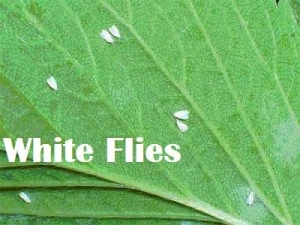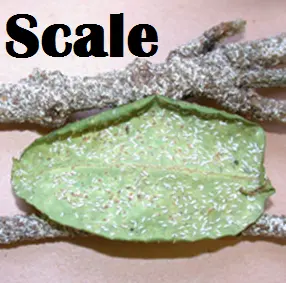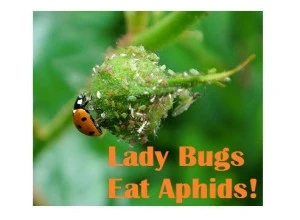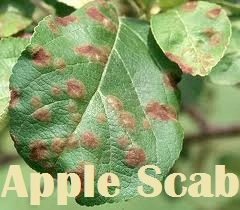 Trees and shrubs are important parts of our landscapes. Trees provide shade and clean the air and shrubs fill spaces throughout our landscapes. If you have evergreen trees and shrubs, you can have color year round! Pests and diseases can be natural risks that come along with them though…While they might not kill the shrubs and trees outright, they can cause extra stress on them, making it difficult to survive during extreme weather such as summer drought and heat. Being an aware and engaged homeowner, may work to your, and your landscape’s advantage.
Trees and shrubs are important parts of our landscapes. Trees provide shade and clean the air and shrubs fill spaces throughout our landscapes. If you have evergreen trees and shrubs, you can have color year round! Pests and diseases can be natural risks that come along with them though…While they might not kill the shrubs and trees outright, they can cause extra stress on them, making it difficult to survive during extreme weather such as summer drought and heat. Being an aware and engaged homeowner, may work to your, and your landscape’s advantage.
 Late spring and early summer is when pests emerge to start feeding. Beetles, mites, caterpillars, scale and white flies can defoliate a tree or shrubs within days. Beetles and caterpillars are leaf-chewing, while mites, scale, and white flies suck the juices from the leaves, flourishing in hot, dry weather. Scale insects produce a sticky substance called “honeydew” that coats objects between the tree/shrubs branches, this sticky film, in turn, holds sooty mold. White flies swarm up in clouds when infested plants are disturbed.
Late spring and early summer is when pests emerge to start feeding. Beetles, mites, caterpillars, scale and white flies can defoliate a tree or shrubs within days. Beetles and caterpillars are leaf-chewing, while mites, scale, and white flies suck the juices from the leaves, flourishing in hot, dry weather. Scale insects produce a sticky substance called “honeydew” that coats objects between the tree/shrubs branches, this sticky film, in turn, holds sooty mold. White flies swarm up in clouds when infested plants are disturbed.
Chemicals aren’t always the best solution when it comes to getting rid of a pest; beneficial insects can also be killed, as we have seen with bees. Let nature help you by finding a predator. Lady bugs, soldier beetles, praying mantis, spiders, and some type of wasps can help keep your landscape intact. I know it may seem odd to spend money on insects but if you let nature take its course, your landscape will be healthier in the long run. Any garden center or mail order company that carries organic products, will also carry a selection of these beneficial insects.
 Live pests are not the only danger to trees and shrubs. Fungus can cause plant diseases. Verticillium wilt is a fungus that lives in the soil and attacks the roots of many woody and herbaceous plants. Apple scab is a fungal leaf disease that can lead to defoliation, which causes added stress to a tree, leaving it susceptible to other diseases. Canker is a fungus that will invade and kill stressed plant tissue. Did you know that winter injury, caused by low temperatures, and storm damage can also make plants more prone to infectious diseases and insect problems?
Live pests are not the only danger to trees and shrubs. Fungus can cause plant diseases. Verticillium wilt is a fungus that lives in the soil and attacks the roots of many woody and herbaceous plants. Apple scab is a fungal leaf disease that can lead to defoliation, which causes added stress to a tree, leaving it susceptible to other diseases. Canker is a fungus that will invade and kill stressed plant tissue. Did you know that winter injury, caused by low temperatures, and storm damage can also make plants more prone to infectious diseases and insect problems?
 There are some key preventive measures that homeowners can take to promote the health and pest/disease tolerance of their trees and shrubs. Perhaps, the most important element in maintaining a healthy plant is moisture. Keeping these woody plants watered is top priority. Maintaining moisture in the root zone is accomplished by mulch circles or beds around their bases. Mulching the bases helps retain water for longer periods of time, thus, increasing the chance of survival during times of drought. Mulching at the base of your trees and shrubs, is a practice that has said to improve the general health of your plant, so it can fight off disease and pests easily.
There are some key preventive measures that homeowners can take to promote the health and pest/disease tolerance of their trees and shrubs. Perhaps, the most important element in maintaining a healthy plant is moisture. Keeping these woody plants watered is top priority. Maintaining moisture in the root zone is accomplished by mulch circles or beds around their bases. Mulching the bases helps retain water for longer periods of time, thus, increasing the chance of survival during times of drought. Mulching at the base of your trees and shrubs, is a practice that has said to improve the general health of your plant, so it can fight off disease and pests easily.
Everyone wants the “wow factor” of a beautiful lawn and flowering landscapes, this can be achieved by using trees and shrubs for height and texture- and enhanced when all of the elements you need for a beautiful yard, come together- creating a visually appealing, healthy landscape for everyone to enjoy.



Comments (0)
Sorry! The comments have been closed.